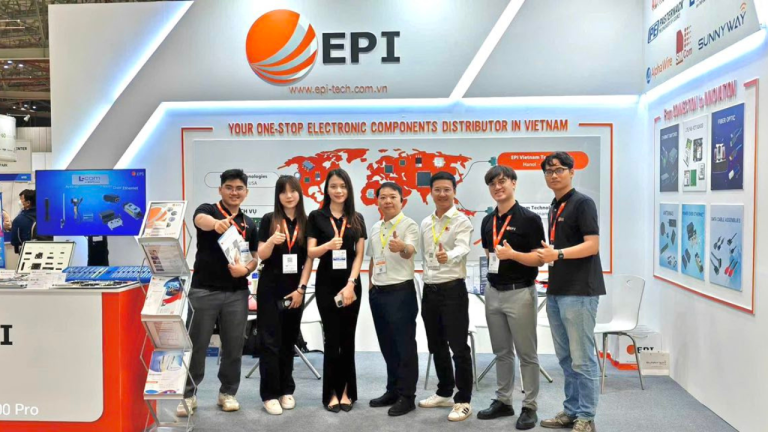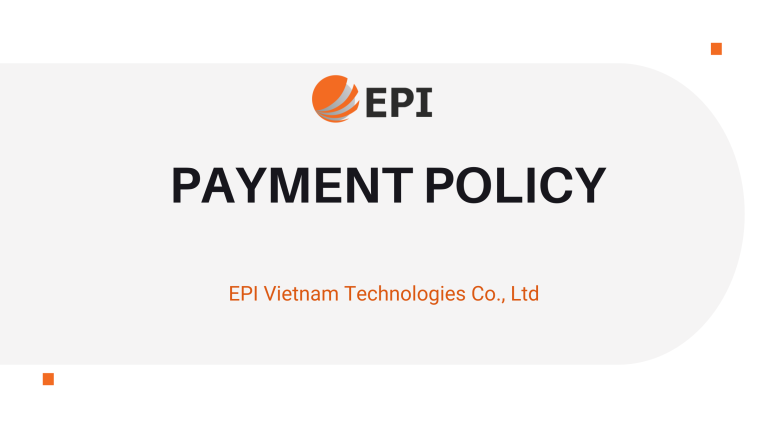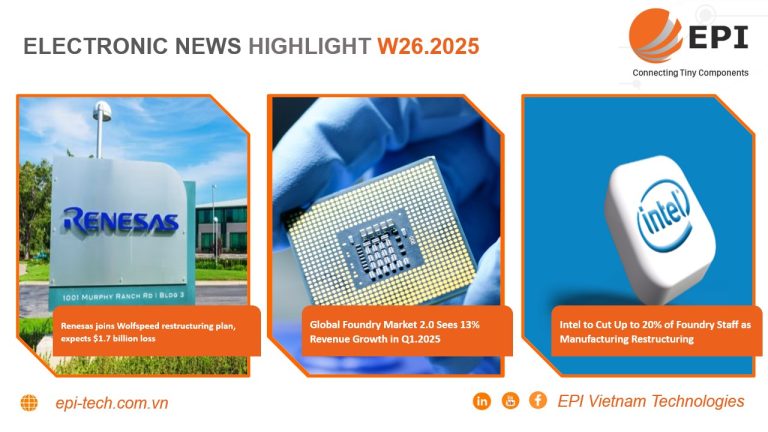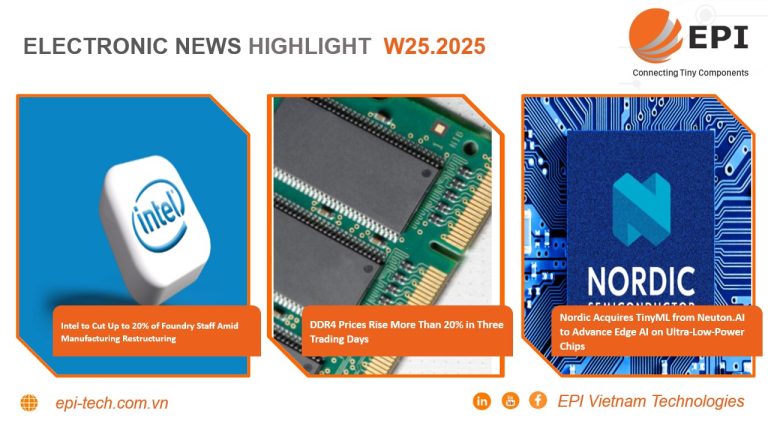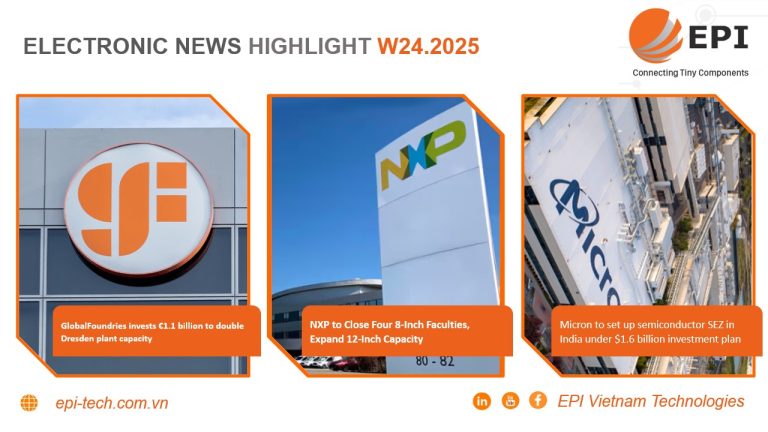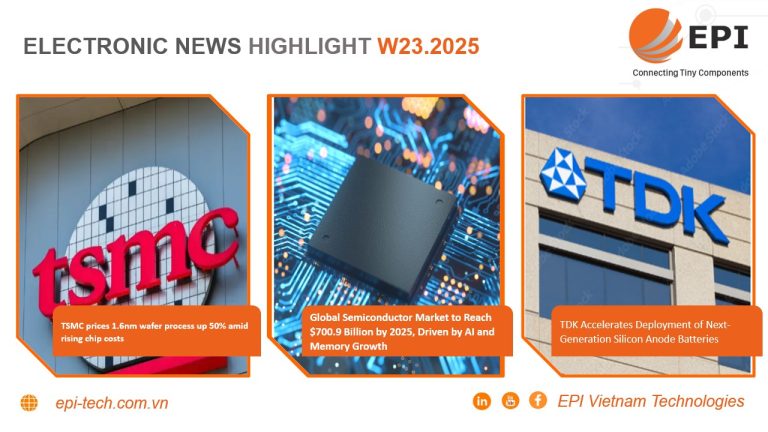ELECTRONICS NEWS HIGHLIGHT W35.2024

1. Global semiconductor sales increase 18.7% year-on-year in 2023 in July
According to the Semiconductor Industry Association SIA, global semiconductor sales reached 51.3 billion USD in July 2024, marking an increase of 18.7% compared to 43.2 billion USD in July 2023. currently a 2.7% increase compared to June 2024’s total of USD 50 billion, continuing the positive growth trend for the fourth consecutive month.
President and Chief Executive Officer John Neuffer said that “The Americas market stands out with outstanding performance, achieving sales growth of 40.1% year-on-year, leading regional growth. The global semiconductor market showed strong year-on-year growth in July, with monthly gains continuing to underpin industry momentum.”
By region, year-on-year sales increased significantly in the Americas (40.1%), China (19.5%) and Asia Pacific. All other regions (16.7%). However, sales decreased in Japan (-0.8%) and Europe (-12%). On a monthly basis, July sales increased in the Americas (4.3%), Asia Pacific. All other regions (3.9%), Japan (3.3%) and China (0.9%) and saw a slight decline in Europe (-0.5%). This growth reflects a robust semiconductor market.
According to the Semiconductor Industry Association SIA, global semiconductor sales reached 51.3 billion USD in July 2024, marking an increase of 18.7% compared to 43.2 billion USD in July 2023. currently a 2.7% increase compared to June 2024’s total of USD 50 billion, continuing the positive growth trend for the fourth consecutive month.
President and Chief Executive Officer John Neuffer said that “The Americas market stands out with outstanding performance, achieving sales growth of 40.1% year-on-year, leading regional growth. The global semiconductor market showed strong year-on-year growth in July, with monthly gains continuing to underpin industry momentum.”
By region, year-on-year sales increased significantly in the Americas (40.1%), China (19.5%) and Asia Pacific. All other regions (16.7%). However, sales decreased in Japan (-0.8%) and Europe (-12%). On a monthly basis, July sales increased in the Americas (4.3%), Asia Pacific. All other regions (3.9%), Japan (3.3%) and China (0.9%) and saw a slight decline in Europe (-0.5%). This growth reflects a robust semiconductor market.
Learn more: Global semiconductor sales increase 18i.7% year-on-year in July 2023
2. AI chips and storage drive 20% growth in global semiconductor revenue
According to SEMI’s latest forecast, global semiconductor revenue will grow 20% in 2024, mainly thanks to the AI chip and storage market. In 2025, semiconductor revenue is expected to grow another 20% as demand in the communications, industrial and automotive sectors recover.
SEMI senior director of industry research Clark Tseng noted that electronics sales were flat year-over-year in the first half of the year, with a forecast increase of 4% year-on-year last in the third quarter and the annual increase was 3% to 5%, slightly lower than previous estimates.
Semiconductor revenue grew more than 20% year-on-year in the first half of the year. Besides storage, AI chips are the main growth. According to the report, China’s semiconductors soared 90% in the first half of 2024, mainly due to concerns about stricter US regulations and efforts to build enough mature process capacity. SEMI forecasts the global semiconductor equipment market will grow slightly 3% this year, reaching $109.5 billion, with a 16% increase next year driven by advanced logic chips, packaging and testing.
US semiconductor spending is expected to grow at a CAGR of 22% from 2023 to 2027, Europe and the Middle East 19%, Japan 18% , South Korea is 13%, Taiwan is at about 9% and China may have negative growth. For silicon wafers, shipments are expected to gradually increase in the second half of 2024, but total shipment volumes for the year could decline 3%, with a recovery likely in 2025.
Learn more: AI chips and storage drive 20% growth in global semiconductor revenue
3. Intel will establish an advanced chip research center in Japan with EUV technology
According to the latest information, Intel will cooperate with Japan’s national research institutes to launch a modern semiconductor R&D center aimed at enhancing the country’s chip manufacturing capacity in the field of equipment and technology. Materials are Japan’s strong fields. This is where the advanced extreme ultraviolet (EUV) lithography equipment will be housed, which is expected to be completed within the next three to five years. It will be the first center in Japan to allow industry companies to access EUV equipment for prototyping and testing, promoting collaboration across the industry.
The National Institute of Advanced Industrial Science and Technology (AIST), part of Japan’s Ministry of Economy, Trade and Industry, will oversee the facility’s operations. Meanwhile, Intel will contribute its expertise in EUV-based chip production. This project is expected to involve an investment of hundreds of millions of dollars. Because EUV machines are essential for manufacturing semiconductors at 5nm and smaller scales, crucial for increasing chip performance through higher transistor density, their cost exceeds 40 billion yen (273 million yen). dollars) per unit, creating significant barriers for individual equipment and materials suppliers.
Many Japanese companies depend on EUV equipment at international research centers such as Belgium’s Imec for their company development needs. While Japan’s Rapidus initiative aims to bring EUV technology into mass semiconductor production by the end of 2024, domestic research institutes still do not have access to such advanced equipment. Establishing EUV facilities in Japan would alleviate some of the barriers posed by strict U.S. export controls on EUV-related technologies to China, which complicate and delay Postpone research data on Japan.
Japan boasts major players in the field, such as Lasertec, which dominates the entire EUV testing equipment market, and companies such as JSR, a leader in the needed optoelectronic materials. necessary for angiogenesis.
Learn more: Intel will establish an advanced chip research center in Japan with EUV technology



 English
English  Tiếng Việt
Tiếng Việt 





